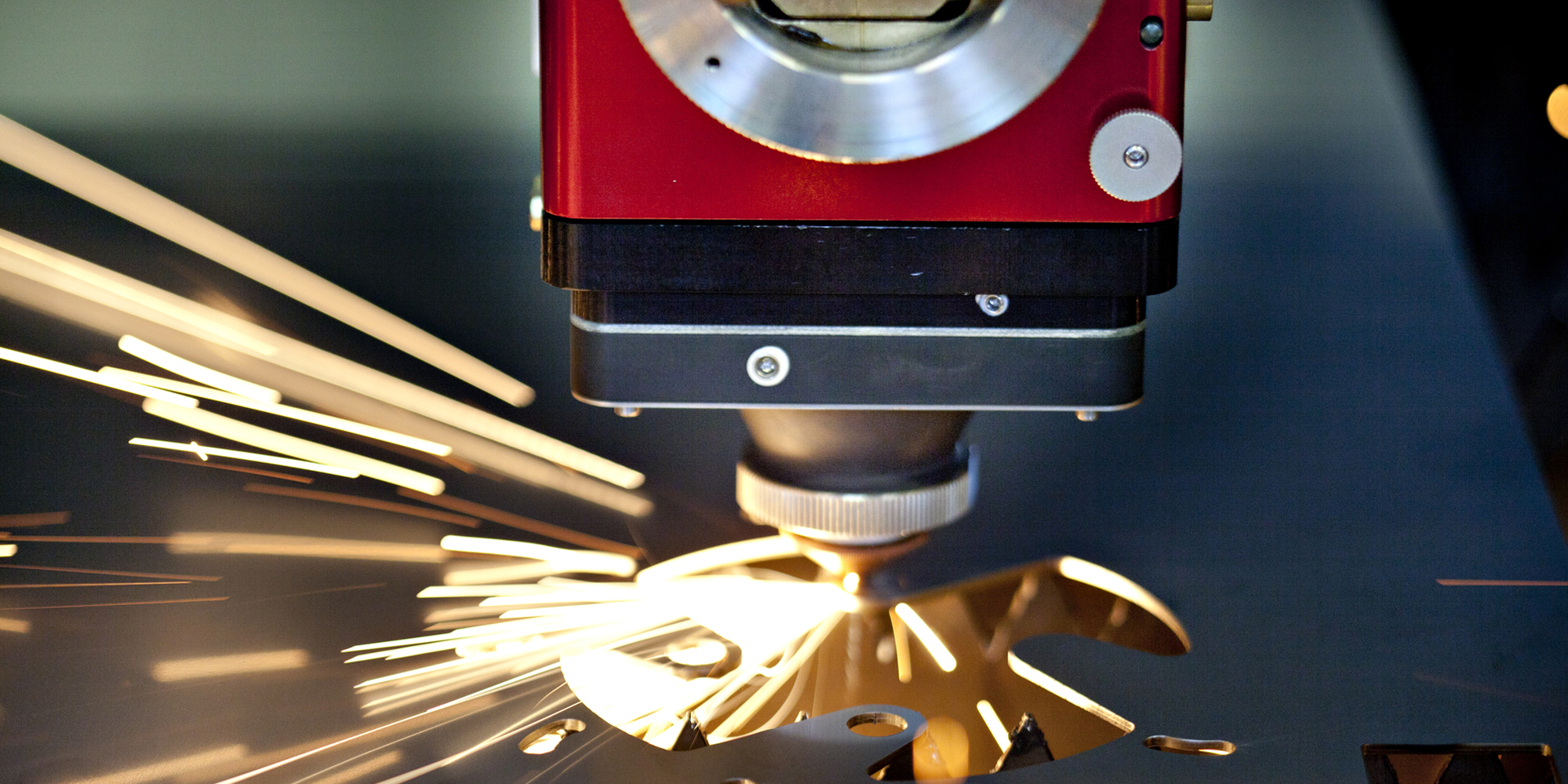Fiber.
Fibre laser light is created by banks of diodes. The light is channeled through fiber optic cable. The amplified light, on exiting the fiber cable is collimated or straightened and then focused by a lens onto the material to be cut.
True fiber laser source.
- No mirrors or moving parts in the beam generating source.
- Reduced maintenance and operating costs.
- Lower electricity consumption. On average a 3kW fiber users up to one third of the power of a 4kW Co2 laser.
- Able to cut reflective material without fear of damaging the machine.
- Higher speeds when cutting thin material. Under 5mm thickness.
- Longer service intervals.
- High safety required. The laser light can pass straight through to the eyes retina.
Co2 laser.
The Co2 active laser medium is a gas discharge which is air or water cooled.
The gas in the discharge tubes generally consists of a percentage mixture of carbon dioxide, nitrogen, hydrogen and helium.
Electricity is run through the gas to produce light.
With a transparent mirror on one end and a reflective mirror on the other the beam produced is emitted through the transparent mirror. The beam is then reflected throught beam path mirrors and focused by the cutting head onto the material to be cut.
- Cutting speed in a straight line is faster than a fiber laser, typically in materials above 5mm thickness.
- Co2 has much faster piercing times at the start of the cut.
- Quality surface finish with C02 when cutting thicker materials.
- The cost per part reduces when cutting materials over 5mm thickness.
- There is no risk of irreparable damage to the retina.
Overall you should consider:
- For cutting materials less than 5mm thickness a Fiber laser may be the better choice.
- For flexibility and quality cutting of materials 5mm thickness and above a Co2 laser may be the better choice.

